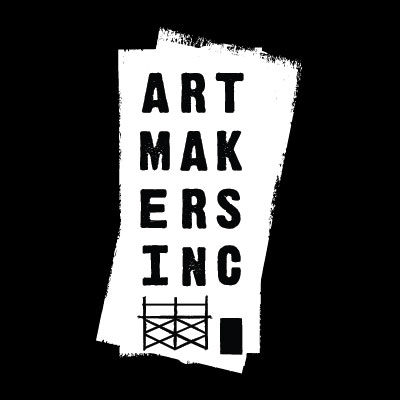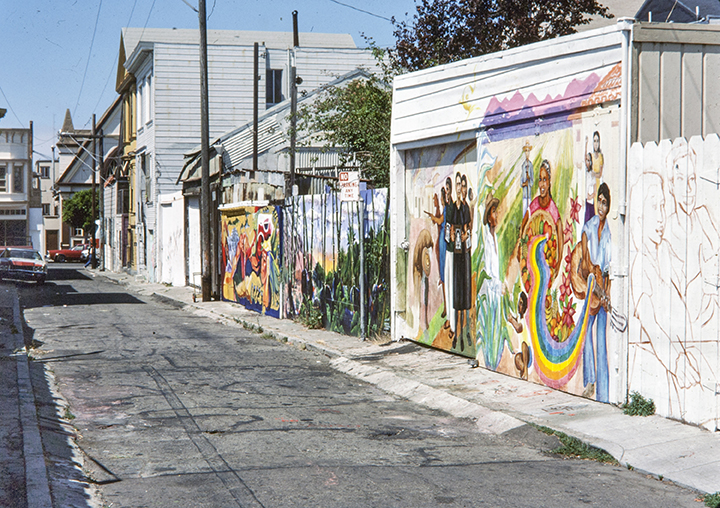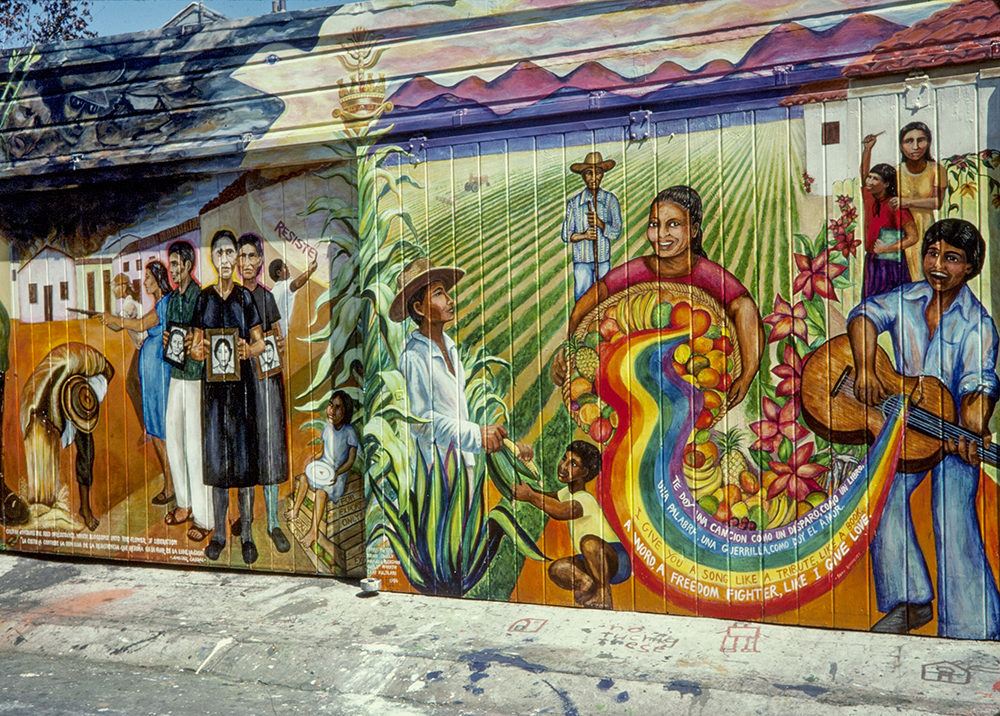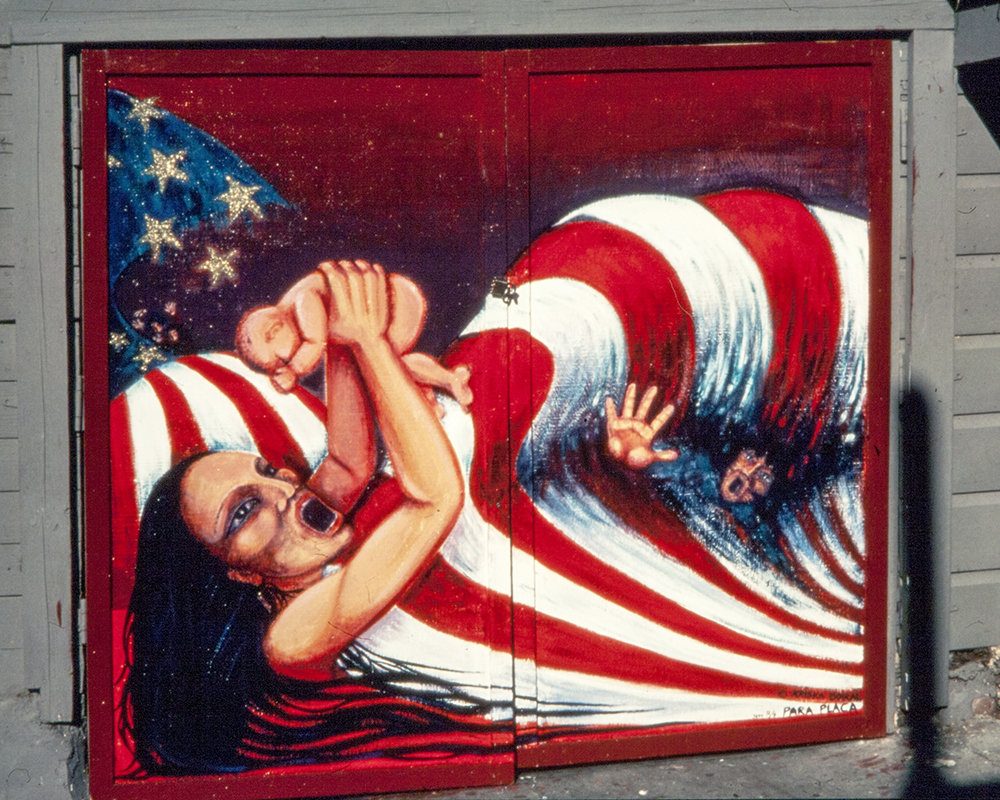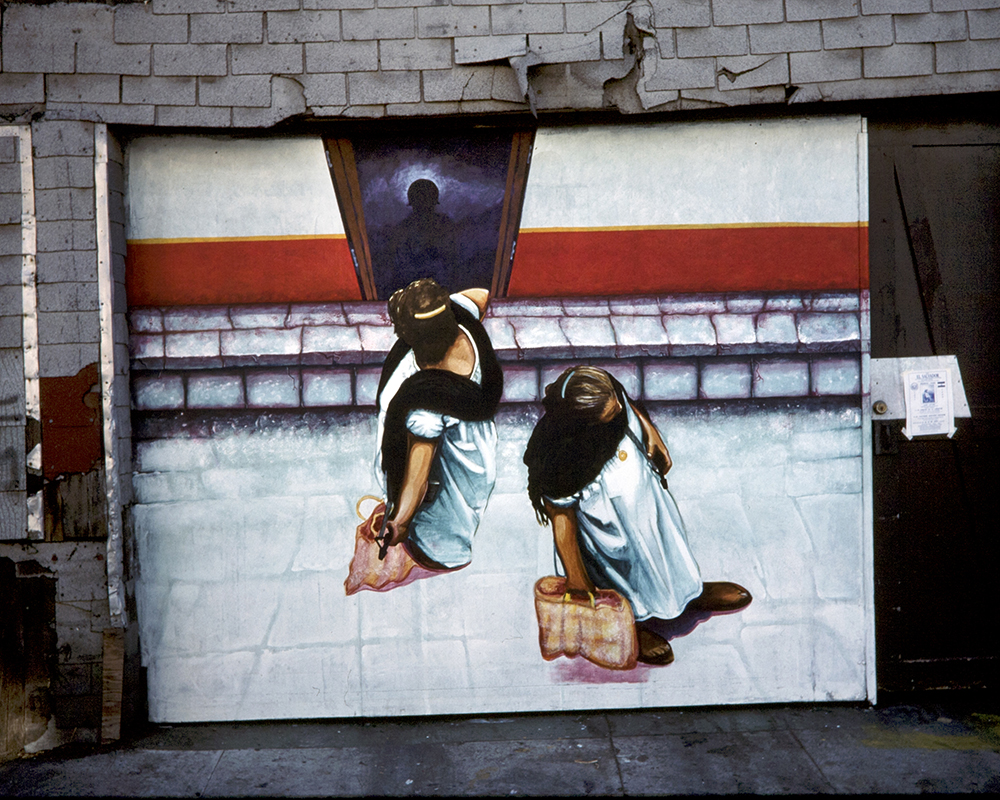Eva Cockcroft
Photo © Camille Perrottet
Early in 1985, Eva Cockcroft—activist, author, founder of Artmakers, and a leader of the national community murals movement—traveled to San Francisco, CA, to visit Balmy Alley in the Mission District. There, over three dozen artists—organized by Ray Patlán and known as PLACA—had, over the past year, painted 27 murals, transforming fences and garage doors into a gallery of potent images. The murals celebrated Mesoamerican indigenous culture and opposed U.S. involvement in Central American wars and the attendant political abuses and human rights violations.
The PLACA murals not only left their mark—a placa in Spanish—on the community; they also inspired Eva to create something similar. The result: “a political art park” in Manhattan’s East Village (Loisaida).
The May 7th meeting, held at CHARAS’s El Bohio Community Center, attracted many “artists of conviction.” They joined the artists who, a month earlier, gathered over a spaghetti potluck dinner at Eva’s loft on Lafayette Street. At this dinner, Eva spoke about “the difficult conditions facing people living in Loisaida and elsewhere where the delivery of government services to meet basic needs never arrive,” recalls muralist Rikki Asher. “The conversation soon turned to New York City’s mural organizations no longer offering opportunities to paint political murals.”
Eva and other “activist artists” had directed many murals for Cityarts Workshop, established in 1968 and lauded for addressing social ills. Then, in the late 1970s, its longtime funder NYSCA (New York State Council on the Arts) expressed its dissatisfaction with the “aesthetics” of the murals—which Eva and muralist Joe Stephenson considered code for “political content.” It also changed its funding eligibility guidelines, in effect limiting painting opportunities. Describing her frustration that led to the founding of Artmakers, Eva wrote in the Winter 1985 issue of Community Murals Magazine (CMM) of the “desire to return to the organic feeling of the early mural movement when the personal conviction and politics of the artists and the aroused communities coincided.”
Eva was active in many organizations, and several La Lucha muralists met her through their political activities at Art Against Apartheid, Artists Call Against US Intervention in Central America, Artists for Social Responsibility, National Alliance Against Racist and Political Repression, Political Art Distribution/Documentation (PADD), and the War Resisters League. Responding to Artmakers’ flyer seeking artists to paint political murals, those convening on May 7th were activist, minority, graffiti, and/or East Village artists, the majority women. They left the meeting committed to participating in a neighborhood mural project entitled La Lucha Continua in Central America, South Africa and The Lower East Side. Writing in the same issue of CMM, Eva recognized that “coming on the heels of the Artists Call Against US Intervention in Central America and Art Against Apartheid exhibitions in New York, it seemed essential that the project deal with, at least, those two issues. The housing struggle or gentrification is the most important issue in the local neighborhood.”
Chino Garcia
Courtesy of La Plaza Cultural Archives
Eva contacted Carlos “Chino” Garcia, one of the six founders of the housing and cultural organization CHARAS—its name an acronym of their first names—for help. Working with Adopt-A-Building, Chino obtained permissions from building owners to paint the exterior walls. Eva then organized a design selection committee that included Artmakers artists, members of CHARAS and El Bohio Community Center, and other community activists. “The artists presented their ideas, backed up with sketches, drawings, and paintings,” remembers Camille Perrottet. “As we looked at them spread out on the floor, two additional themes emerged—feminism and police brutality.” In 1986, a sixth theme was introduced: immigration. Strategically sited, the murals allowed viewers to see all five themes from any vantage point in La Plaza. This was not always easy to achieve.
According to Tim Drescher, a mural historian based in Berkeley, CA, the “differences … emerged in Balmy Alley’s trip east—specifically a political shift from cultural politics (that celebrated Central American cultures and opposed U.S. involvement there) to a more vigorous, aggressive politics (the fight or la lucha). It was an ongoing struggle, not just a celebration. New York’s murals were more confrontational.”
Call for Proposals for La Lucha Continua
Courtesy of Karin Batten
Alison Lew, Ken Bloomer and unknown man reviewing mural proposals
Photo © Camille Perrottet
Some mural proposals.
Photo © Camille Perrottet
